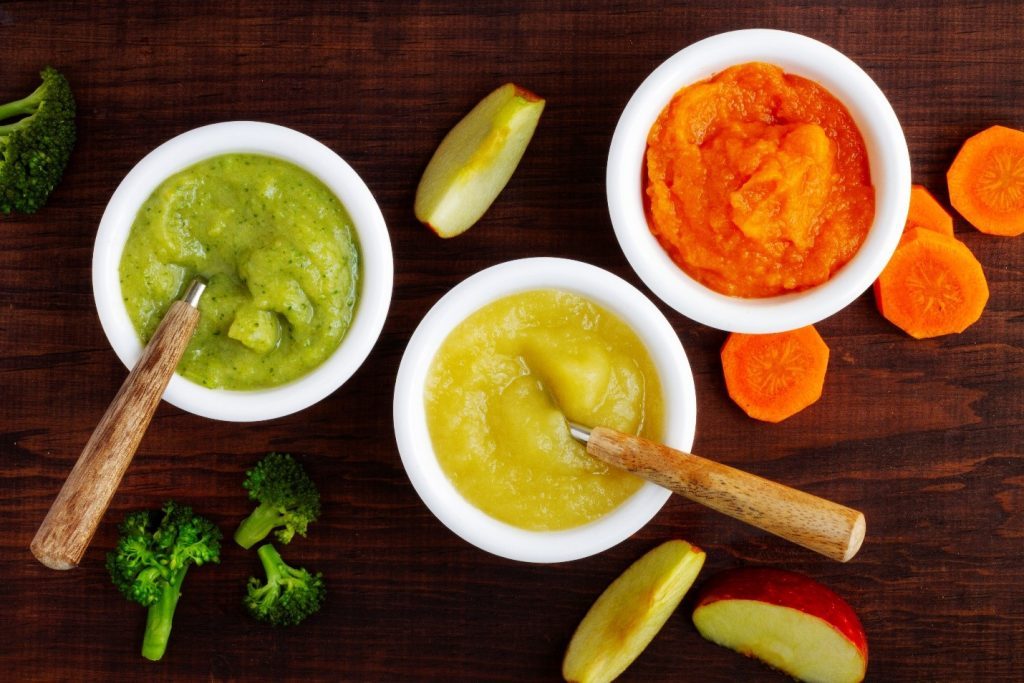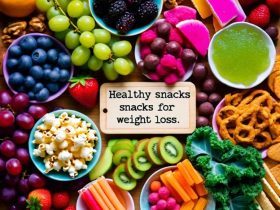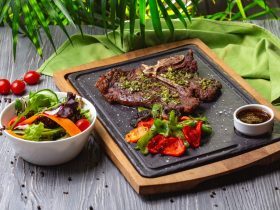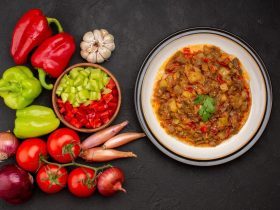An Introduction to Baby Food Recipes.
Introducing solid foods to your child is an exciting milestone in their development. Baby food recipes are a healthy and enjoyable method to provide essential nutrients to your baby while also introducing them to a variety of flavors and sensations. In this comprehensive guide, we’ll look at simple and healthy baby food recipes that you can prepare at home to ensure your child gets off to the best possible start.
Key Features of Baby Food Recipes.
Nutrient-dense ingredients:
Baby food recipes include nutrient-dense meals including fruits, vegetables, cereals, and lean meats to help your baby grow and develop properly.
Simple preparation.
These dishes are intended to be simple to prepare, often requiring little cooking or processing to preserve their natural flavor.
Age-Appropriate Texture:
Baby food recipes are tailored to suit your baby’s developmental stage, offering smooth purees for beginners and gradually introducing chunkier textures as they grow older.
Various flavors:
Presenting various flavors from the beginning will assist with extending your child’s bed and urge them to consume more different feasts as they create.
Child food recipes request new fixings.
To guarantee that your youngster gets the greatest healthful substance from their dinners, pick new, occasional food varieties any place plausible.
Cleanliness arrangements:
To lessen the risk of defilement and guarantee the well-being of your child’s food, practice superb cleanliness, like cleaning your hands and utensils.
Capacity Rules:
To keep up with newness and forestall ruining, refrigerate arranged child food in water/airproof holders or ice 3D shape plates named with the date.
Presentation of Allergens:
Present potential allergens like nuts, eggs, and fish progressively, and each in turn to screen your child’s response and distinguish any sensitivities.
3 Best child food recipes
1. Yam Squash

Fixings:
• 1 yam
• Water (for steaming)
Directions:
1. Wash and peel the sweet potatoes, then chop them into little lumps.
2. Steam sweet potatoes for 10-15 minutes, or until they are delicate.
3. In a blender or food processor, puree the steamed sweet potato until smooth, adding water as required to get the desired consistency.
4. Let the sweet potato pound cool fairly preceding serving to your kid.
2. Banana Avocado Puree
Trimmings:
• 1 prepared banana
• 1/2 prepared avocado
Bearings:
1. Peel the banana and avocado and cut them into pieces.
2. Place the banana and avocado bumps in a blender or food processor.
3. Mix until smooth, adding water as essential for consistency.
4. Move the puree to a plate and serve promptly to your child.
2. Pear and Spinach Puree Fixings:

• One pear and a small heap of new spinach leaves.
Rules:
1. Wash and peel the sweet potatoes, then cut them into little lumps.
2. Steam sweet potatoes for 10-15 minutes, or until they are delicate.
3. In a blender or food processor, puree the steamed sweet potato until smooth, adding water as needed to achieve the desired consistency.
4. Puree the steamed pear and spinach in a blender or food processor until smooth.
5. Allow the puree to cool before taking care of it for your youngster.
These straightforward youngster food recipes give central enhancements and familiarize delicious flavors with your little one’s eating schedule, making dinner time both nutritious and wonderful.
Conclusion
Preparing homemade baby food using easy and nutritious recipes is a rewarding way to provide your baby with a healthy start to its culinary journey. By following simple guidelines and offering a variety of flavors and textures, you can nurture your baby’s love for wholesome foods and lay the foundation for a lifetime of healthy eating habits.
FAQs about Baby Food Recipes
1. When should I start introducing solid foods to my baby?
It’s generally recommended to start introducing solid foods to your baby around 6 months of age, or when they show signs of readiness, such as being able to sit up with support and showing interest in food. Before this age, breast milk or formula provides all the necessary nutrients for your baby’s growth and development.
2. Can I make baby food ahead of time and store it?
Yes, you can prepare batches of baby food ahead of time and store them for later use. Homemade baby food can be stored in the refrigerator for up to 3 days or in the freezer for up to 3 months. It’s essential to use clean, airtight containers for storage to maintain freshness and prevent contamination.
3. Are homemade baby food recipes better than store-bought options?
Homemade baby food recipes are often preferred by parents because they offer complete control over ingredients and freshness. With homemade baby food, you can choose organic produce and avoid added sugars, salt, and preservatives commonly found in some store-bought options. Additionally, making baby food at home can be more cost-effective in the long run.
4. How do I know if my baby is allergic to a particular food?
Introducing new foods to your baby’s diet can be exciting, but it’s essential to watch for any signs of an allergic reaction. Common symptoms of food allergies in babies include rash, hives, vomiting, diarrhea, or difficulty breathing. If you suspect that your baby is allergic to a particular food, stop feeding it immediately and consult your pediatrician for further guidance.
5. Can I combine different fruits and vegetables in baby food recipes?
Yes, you can combine a variety of fruits and vegetables to create flavorful and nutritious baby food blends. Mixing different fruits and vegetables not only adds variety to your baby’s diet but also provides a broader range of essential nutrients. However, it’s essential to introduce new foods one at a time to monitor your baby’s reaction to each ingredient and identify any potential allergies or sensitivities.
















Leave a Reply